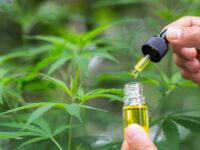History of Armor Mask

Armor Mask is a brand of advanced polymer elastomer that’s applied with a spray mechanism to create a sealant barrier to protect various aerospace composites.
Armor Mask is an environmentally friendly, non-hazardous, two-component coating that can be applied by hand or sprayer. It provides a high level of protection against moisture and chemicals while maintaining excellent adhesion and flexibility. Armor Mask is ideal for use on composite parts such as aircraft exterior panels and engine components.
The majority of composites are used in the aerospace industry, but they’re also finding increasing use in other areas such as automotive and marine.
One of the challenges with composites is that they’re very porous and thus prone to damage from moisture and other environmental factors. Armor Mask is a brand of advanced polymer elastomer that’s applied with a spray mechanism to create a sealant barrier to protect various aerospace composites.
The product is applied to high-performance carbon fiber, Kevlar or glass reinforced plastics (GRP) before painting, either by hand or with a spray gun. It creates a thin film on the surface that creates an elastic barrier against moisture penetration and gives the composite structure better resistance to UV light degradation.
The history of advanced polymer elastomer (APR) can be traced back to the use of rubber in the 19th century by Charles Goodyear who discovered vulcanization, a process that crosslinks rubber chains to form a hard and durable material. Vulcanized rubber was used in tires and shoe soles, but did not have good mechanical properties or resistance to heat or chemicals.
In the 1970s, researchers at Dow Chemical Company and DuPont developed new copolymers based on styrene-butadiene rubber (SBR), which were first used for tire inner liners. The performance characteristics of these materials were improved with the addition of other polymers including ethylene-propylene diene monomer (EPDM) and acrylonitrile-butadiene rubber (NBR). Around this same time, scientists at 3M Company developed a new generation of elastomers using ethylene propylene diene monomer (EPDM) as its base polymer combined with various fillers and additives to improve specific properties such as strength, high temperature performance and abrasion resistance. These new materials were called advanced polymer elastomers (APR) because they were based on existing rubbers.
In 1992, a small company named HoseCo International introduced an APEL product that uses an advanced combination of polymers and other materials to create a hose that is highly resistant to abrasion, punctures and tears while still remaining lightweight enough for use in most firefighting applications. The product quickly gained popularity with firefighters across the country due to its flexible design and ease of use.
Finding armor mask doesn’t have to be a hassle.








